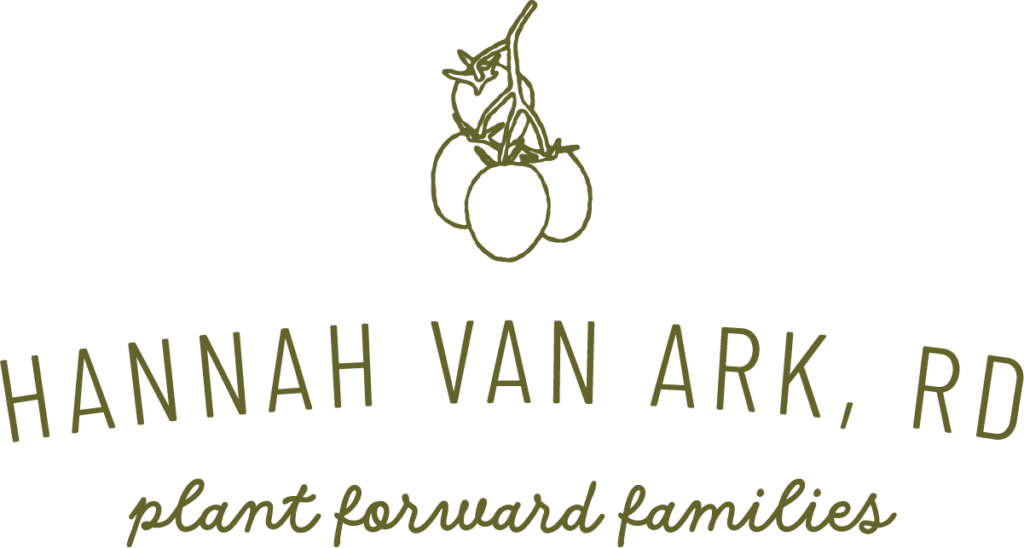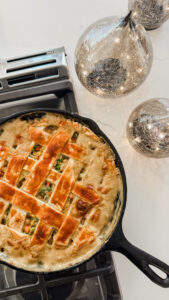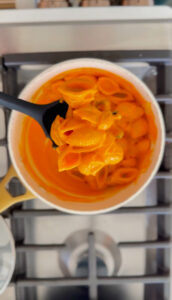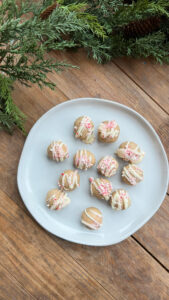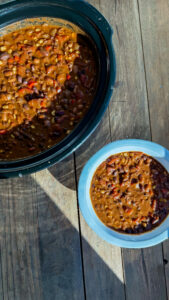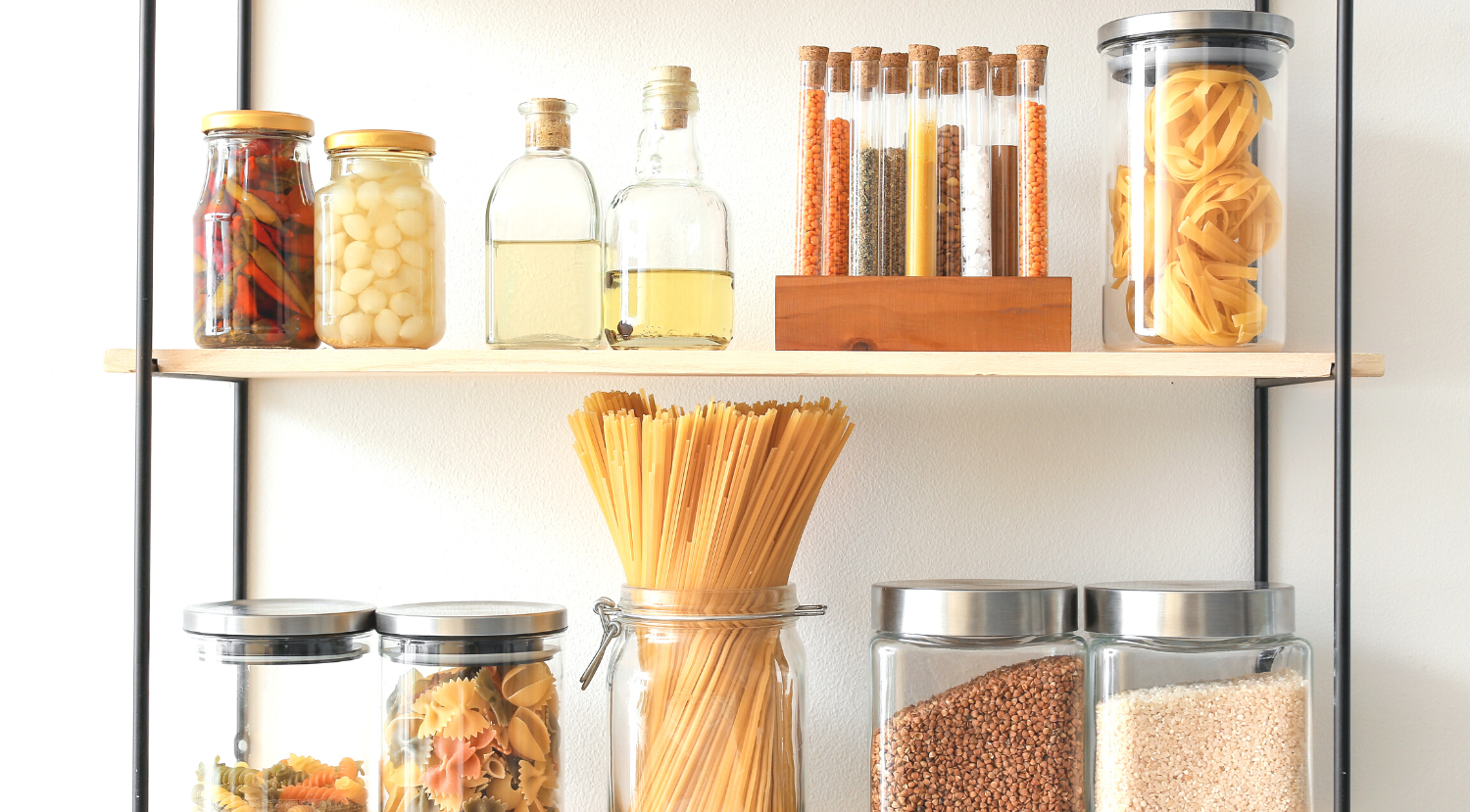
Spring is officially in the air, and for spring cleaning, how about we start with the pantry?
At least for me, it’s one of the WORST areas in my home for accumulating clutter and mess…
I mean, can someone tell me why I need four open bags of brown sugar sitting together? And don’t get me started on the mystery white powder in the bottom of the baking bin.
Oh, and if your eating habits could use a little tidying up too, you’re in luck – studies actually show that keeping a clean and organized kitchen is correlated with healthier eating!
So let’s dive into this guide, where we’re going to talk all about how to organize the plant-forward pantry for eating well, from stocking the right foods to strategies to make healthy cooking (and eating) a breeze!
Environmental Design: Making the Healthy Choice the Easy Choice
Have you ever set out your gym clothes the night before your morning workout to find that your morning run is much more likely to happen?
That’s environmental design at work!
It’s a simple yet effective tool of habit change. It basically means setting up your environment so that it supports the habits that you want to cultivate, or deters the habits that you want to break.
We can extend this principle to our kitchen spaces to make the healthiest choice the easiest choice, and therefore the more likely choice.
(By the way – I teach this strategy to organize your whole life for easy healthy living in my self-paced course The Plant Forward Plan, which guides you to harness the power of habit change and plant-forward eating to lose weight sustainably in 8 weeks!)
BUT you necessarily don’t need a total life overhaul to make environmental design work wonders for you! We can start one step at a time.
In the pantry, environmental design means three things:
-
Having the right staple foods on hand for easy access to create healthy meals.
-
Organizing the food in such a way that the default choice is the healthy one.
-
Making cooking easier by having the right organizational systems in place.
Let’s start with some basic staples to keep on hand before moving onto some easy organizational strategies to make healthy cooking a breeze instead of a chore.
The Basics: Plant-Forward Pantry Staples
Beans & lentils: This is your go-to protein source for easy, plant-forward meals! Beans are versatile and can be used as a primary protein source on their own, or combined with meat to extend a dish and add more plant-protein and fiber.
I like to say there’s a “bean for every cuisine” – I recommend keeping white beans, chickpeas, black beans, and dried lentils on hand at least if you enjoy cooking a variety of dishes from around the world.
If you’re enjoying Mexican, Latin American or Caribbean-inspired cuisine, try black beans. For Italian or French food, white beans pair well. Chickpeas are great for Greek- or Middle Eastern-inspired food, and lentils work well for Middle Eastern, Moroccan and Indian food. For Asian-inspired food, keep shelled edamame in the freezer!
Grains & pastas: Whole grains are slow-burning, healthy carbs to keep on hand and are an inexpensive way to boost the energy you get from your meals!
These can be “intact” whole grains (like brown rice, quinoa, farro, etc.) or flour-based pasta products like whole wheat lasagna noodles, brown rice vermicelli or even legume-based short cut pasta (like chickpea or red lentil pasta).
Canned goods: Consider flavorful canned goods like chipotle peppers in adobo, diced green chiles, basil pesto, artichoke hearts, sun dried tomatoes, olives, capers, and other flavorful shelf-stable goodies. Whatever cuisine you enjoy, keep flavoring agents on hand to inspire some easy meals when the question of “what’s for dinner?” pops into your head!
Baking items: Flours, sweeteners, and baking staples like baking soda or vanilla extract that you may want to have in a pinch when you’re ready to whip up some healthy muffins or a better-for-you dessert. I personally always keep almond flour, whole wheat flour and all-purpose flours on hand, as well as my favorite sweeteners like organic cane sugar, dates and maple syrup.
Cereals & breadkfast items: Great items to keep on hand are protein powder for smoothies and oatmeal, high-protein granolas, low-sugar and high-fiber cereals, as well as hemp hearts, dried fruit and nuts and seeds for topping your smoothies and breakfast oat or granola bowls.
Spices: Scroll down for a bit more on spices, but suffice to say here that a well-stocked spice cabinet makes healthy cooking SO much easier and more enjoyable. Go wild with this one, and try to buy in bulk if there are certain spices you use a ton of (in my kitchen, this is chili powder and cumin).
Oils, vinegars & condiments: These are for cooking and for flavoring – nothing adds a pop of flavor to a finished dish quite like a drizzle of infused oil or the right vinegar.
For cooking, I personally recommend olive oil and avocado oil. These unsaturated fats are heart healthy and mildly flavored.
Vinegars I keep on hand include balsamic, white wine, red wine, rice and apple cider vinegars.
Grab & go snacks: Think nuts, trail mixes, crispy chickpeas, healthy granola or protein bars, or anything else that you can quickly toss into your bag or grab without much fuss when hunger strikes. It pays to be prepared with these.
Organizing the Pantry for Easy Cooking
Now that we’ve got our staples stocked, let’s talk about how to organize them for easy healthy eating and cooking using the principles of environmental design!
Remember, environmental design means making the healthy choice the easiest choice, and the less healthy choice a little less convenient.
Organization Strategy #1: Consolidate!
Take some time to go through the pantry and combine like (or identical) foods into a single container if you can. (For me, this meant combining the four random bags of brown sugar into a single bag — so much less clutter!)
In my book, foods don’t have to be identical to be combined either! I’ve been known to combine the last remnants of boxes of short cut pasta like penne, fusili and macaroni into a single box. Same with granolas – sometimes blending makes them taste great, and saves space!
Organization Strategy #2: Labeled Shelving
Break out the label maker, because this tip is worth it’s weight in gold! I highly recommend labeling where things SHOULD go in the pantry so that everyone in the home has an idea of where to find food – and more importantly, where to put it back.
A step further which has been helpful in my pantry is having labeled bins for pastas, baked goods, and anything else that tends to accumulate in an unorganized pile. This lets me stack categories of less standard-shaped pantry goods without them falling over in a messy heap.
Organization Strategy #3: Prioritize Visibility
However you can make your pantry goods more visible to you, the better you’ll be at keeping them organized, and keeping your pantry more adequately stocked because you’ll be able to see when you’re running low on something.
This can include tiered shelving for canned goods, a lazy Susan in hard-to-reach back corners for bulk flours and jars, and clear jars or canisters so you can keep close tabs on the quantities of dry goods you have left.
An extension of this is having your spices visible in a special section of the pantry and organizing them alphabetically – I’ve done this by hanging a rack on the back of my pantry door, but you can use a drawer, or spinning spice rack.
And I cannot tell you how much quicker and easier having alphabetized spices has made my cooking process! It’s amazing to be able to see at a glance exactly where each spice is, and to be able to easily pluck it out of its spot then put it back for next time. Game changer!
Organization Strategy #4: Think About Your Actual (And Desired) Use Frequency of Foods
Think about what your family uses the most and place these items in convenient locations!
For us, grains and beans go on the middle shelves for quick access. Baking supplies are on lower shelves because we use them less.
Also, think about what foods you want to eat more (or less) of and place them accordingly…
If you want to snack on nuts and dried fruit more often, for example, keep these at the forefront of your line of sight.
On the other hand, if you’re trying to cut back on the potato chips or chocolate that you’re eating, try storing them relatively out of sight on the top or bottom shelf in an opaque bin – sometimes these foods are truly out of sight, out of mind, and you may find yourself craving them less the less visible they are!
Change Your Environment, and Your Habits Follow
The truth is that the more organized in our cooking spaces that we are, the easier it is to eat healthier without overwhelm.
And when we simplify preparing nourishing food by…
-
Knowing what we have on hand
-
Keeping healthy staples in stock
-
Making them easily accessible through organization
… it feels so much less daunting to whip together a side of brown rice on a weeknight, or bake those balanced energy bars that you know will be so helpful to have on hand for snacks.
So let’s get to organizing! 🙂
And tag me on Instagram @plant.forward.nutritionist or comment here below if you try any of these tips, I love seeing a good pantry transformation!
P.S. Meal planning is the next essential step to making healthy food a breeze – and if you haven’t gotten my full guide on that yet, you can grab it for free here!
